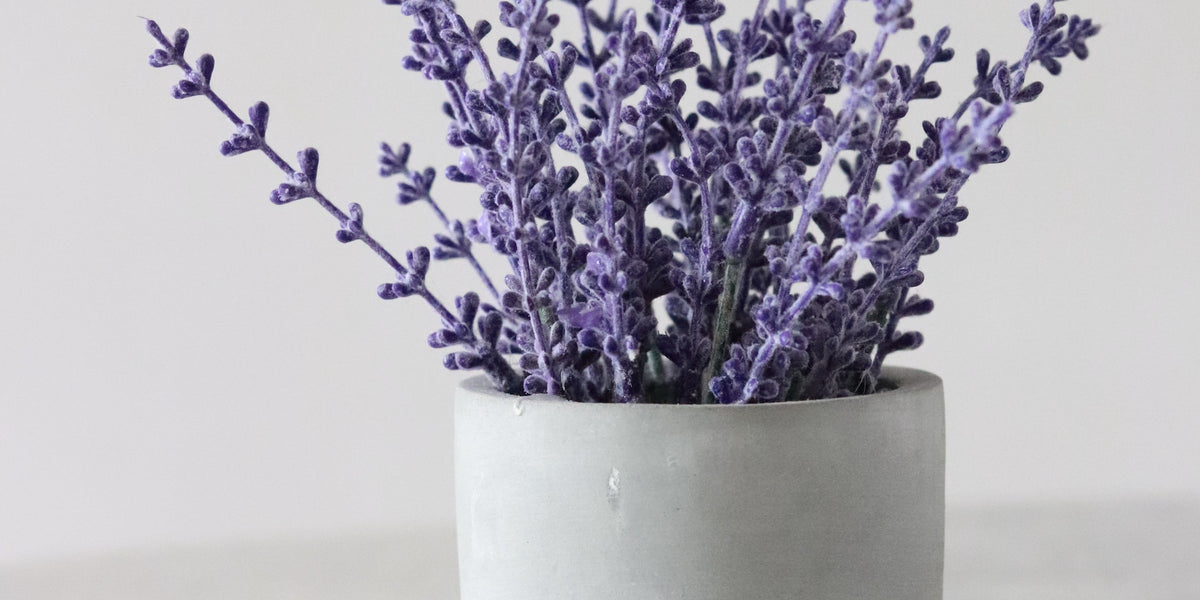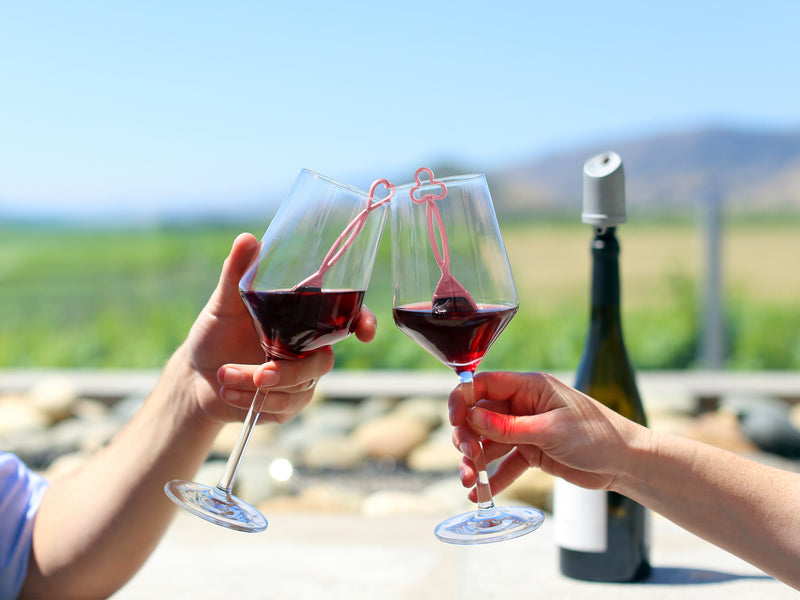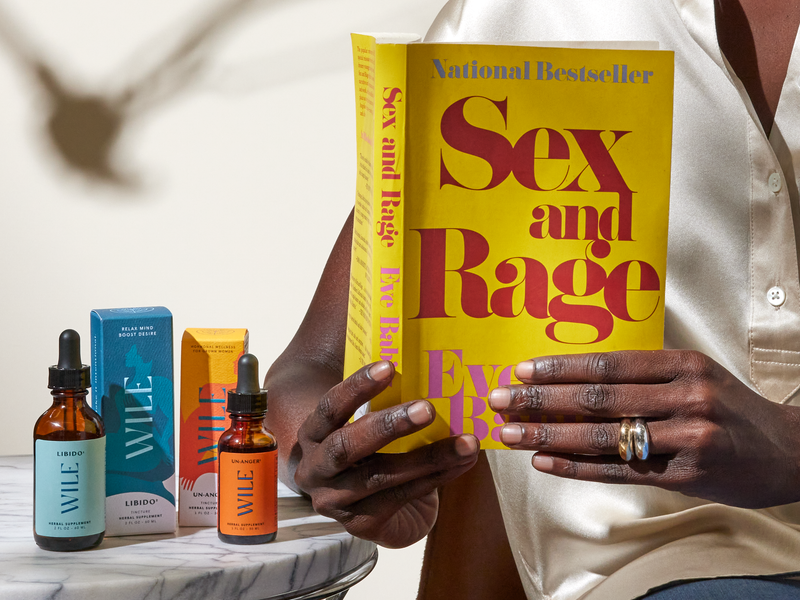An Herb to Relax Your Body and Mind
The world puts huge demands on 40ish-year-old women, and this stress can add up until you feel like combustion is a viable option. Lavender is here to help. It’s not just a go-to hand soap scent — this little purple flower is a highly effective calming herb. It quiets your nervous system and signals to your body that it’s time for rest, healing and relaxation. Fight? Flight? Freeze? Nah, lavender.
Why We Love Lavender
- Lavender is an excellent calming agent because it quiets the”survival” response in your nervous system and activates the part that centers you and helps you rest and heal. Lavender can ground you and bring you back from the edge.
- It’s a favorite in aromatherapeutic use and in gardens. This is a good thing, since we associate lavender with calm. While the active compounds in lavender are effective regardless, that brain shorthand that connects lavender with calm further increases its potency.
- Lavender is a proven medicinal herb and is commonly prescribed in Germany to treat low-level anxiety.
- Super potent as an ingestible, it’s also in Wile Un-Anger tincture.
Key Benefits:
Relaxes the nervous system - lavender is the it-herb for rest and relaxation. This makes it a great addition to our Un-Anger tincture — just a few drops can help rage and stress melt away.
Balances mood - Whether or not your body is calm has a huge effect on the rest of mood. By promoting calm, lavender can help with worry, rumination and occasional depressed mood.
Improves sleep - It’s not news that calming your body can help you fall asleep faster and stay asleep for longer. Lavender is a popular sleep aid.
Traditional Uses:
Lavender has a long history of both medicinal and cosmetic use that dates back to at least the time of the Egyptian pyramids — when Howard Carter opened Tutankahmun’s tomb in 1922 he reported that the lavender flowers in the tomb still had some of their scent, over 3000 years later. Legend also has it that Cleopatra used lavender perfume to seduce her lovers.
Lavender was used as a perfume in ancient Rome and played a large role in Roman bathing culture. As it spread through Europe, it also became renowned as a remedy for epilepsy and migraines.
At the height of the bubonic plague physicians carried lavender to ward off disease. While simply carrying a bundle of flowers isn’t effective medicine, there’s evidence that the naturally occurring antibacterial compounds in lavender helped protect leather workers who used lavender oil in the tanning process to remain plague-free.
About the Plant:
Lavender is a purple flower that grows on shrubs with silvery-green leaves. It’s native to the land surrounding the Mediterranean sea, but spread into gardens and apothecaries across Europe and America early on. There are various lavender cultivars, but all are biologically and chemically similar and have similar effects.
Found In
We use lavender as an ingredient in our Un-Anger tincture, which is taken orally. Though many people are used to lavender as a scent, many people are unfamiliar with lavender in food, drinks, and remedies that you take by mouth. Note that lavender is 100% safe and effective when consumed this way (and we think it’s delicious, too).
Things to Know about Lavender:
Lavender syrups, ice creams and teas are a good way to introduce it as a flavor, as well as our Un-Anger tincture.
Lavender is considered very safe to use. Enjoy!
Clinical Research
- Chien, Li-Wei, Su Cheng, and Chi Harold Liu. “The Effect of Lavender Aromatherapy on Autonomic Nervous System in Midlife Women with Insomnia.” Evidence-Based Complementary and Alternative Medicine 2012 (January 1, 2012): 1–8. https://doi.org/10.1155/2012/740813.
- Kageyama, Aya, Toshio Ueno, Mutsumi Oshio, Hideki Masuda, Hiroko Horiuchi, and Hidehiko Yokogoshi. “Antidepressant-like Effects of an Aqueous Extract of Lavender (Lavandula Angustifolia Mill.) in Rats.” Food Science and Technology Research, May 1, 2012. https://doi.org/10.3136/fstr.18.473.
- Kianpour, Maryam, Akram Mansouri, Tayebeh Mehrabi, and Gholamreza Asghari. “Effect of Lavender Scent Inhalation on Prevention of Stress, Anxiety and Depression in the Postpartum Period.” Iranian Journal of Nursing and Midwifery Research 21, no. 2 (March 1, 2016): 197. https://doi.org/10.4103/1735-9066.178248.
Sources
- Inception. “Sympathetic Vs. Parasympathetic and Why They Matter.” Experience Health & Wellness Center, April 23, 2021. https://www.efchealth.com/sympathetic-vs-parasympathetic-matter/.
- Romaine, Louisa. “All About Lavender | Tyler Arboretum.” Tyler Arboretum | Connect. Explore. Grow., December 7, 2022. https://tylerarboretum.org/all-about-lavender/.
- RxList. “Lavender (Lavandula Officinalis): Generic, Uses, Side Effects, Dosages, Interactions, Warnings,” September 20, 2021. https://www.rxlist.com/consumer_lavender/drugs-condition.htm.
- Senior, Kathryn. “Old Plague Talisman Could Help Treat Pancreatic Cancer.” Lancet Oncology 2, no. 2 (February 1, 2001): 69. https://doi.org/10.1016/s1470-2045(00)00216-3.
- Vinall, Marnie. “Lavender for Anxiety: The Best Way to Use This Calming Herb.” Healthline, February 24, 2021. https://www.healthline.com/health/anxiety/lavender-for-anxiety#:~:text=In%20addition%20to%20its%20sweet,%2C%20d%C3%A9cor%2C%20or%20in%20recipes.
Image Credit: Joyce Toh via Unsplash
This article is intended for informational purposes and is not intended to replace a one-on-one medical consultation with a professional. Wile, Inc researches and shares information and advice from our own research and advisors. We encourage every woman to research, ask questions and speak to a trusted health care professional to make her own best decisions.




